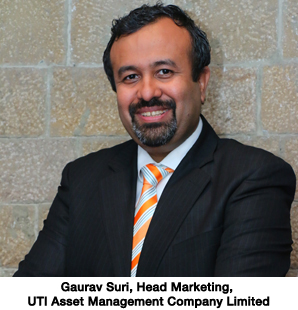Home » Viewpoints » OOH industry needs to reshape conversations, manage perceptions
OOH industry needs to reshape conversations, manage perceptions
By M4G Bureau - August 06, 2015
Gaurav Suri, Head Marketing, UTI Asset Management Company Limited, writes about the typical hurdles in budgeting more spends on OOH and what industry must look out for
 Most oft one hears the following phrases associated with the OOH industry -- "Least measurable and most speculativeâ€, "non-core, secondary mediumâ€, "reminder mediumâ€.
Most oft one hears the following phrases associated with the OOH industry -- "Least measurable and most speculativeâ€, "non-core, secondary mediumâ€, "reminder mediumâ€.Time has come to introspect and think hard to prevent extinction. The entire ecosystem needs tightening. It starts with reshaping conversations on what is the industry - Not just aggregators or few large owners of inventories or media buying agencies.
Who comprises the eco-system?
1. Idea Factory - Creative
2. Media owners -- Quality of infrastructure and maintenance
3. Neutral monitoring and rating agencies - data-based decision making
4. Order in chaos -- Improved business practices for buying with a lot more transparency.
5. Innovation
6. Business owners -- Clients
The Idea Factory: Where is the creative capability being built to think for this medium. This perhaps offers the best options of localisation or hyper-localisation for industries like retail, financial services, travel, medical industry, etc. More often than not there is a print or TV idea being executed in the outdoor medium. High impact, effective advertising rides on ideas. Less is more in this medium. Design which makes it attractive and compelling, not to ignore the message is the responsibility of the creative. Don't be stuck in the 1950s format of a stock photo, product shot, logo and tagline but leverage the medium like a recent auto maker in Europe created a treasure hunt kind of interaction using OOH.
The Media Owners: Need to invest in the infrastructure rather look at ways of maximising revenues to let the site/space die its natural death. Integrate it with town planning so that the infrastructure adds to the city and not becomes an eyesore. Aesthetics and non-intrusive placement will only increase the chance of acceptance amongst consumers. Huge space for enhancement on street furniture and quality, Simple integration of information at bus stops, etc., can bring in utility for the users.
Monitoring Effectiveness: An industry wide currency which gives data-based decision making capability not only for site selection but offers consumer impact measurement systems will help integrate it better in the design/ planning cycles of campaigns.
Professionalism: With the the current buying practices the real price/value of the asset is not very apparent. There are many middlemen involved and barters get done for such assets. If some structure there to circumvent this chaos and make buying easier, we would travel the distance.
Innovation: The need of the hour is really to see how new digital technologies and interactive ways of using smart devices, etc., can be inbuilt to demonstrate the usefulness of the medium. This requires pushing the boundaries and thinking hard. Most of the time it is just a push for inventory and not an idea.
Business Owners: As clients we need to realise the power of the medium as probably the only place which cannot be switched off, folded and kept aside, tuned out, clicked away. Being always on, in the consumer space we carry a responsibility to be aware of this and respect it. Which means expecting too much out of the medium - delivering too much information or overly complex messaging, results in underperformance. Also we should be pushing our partners to think for the medium, and come up with better solutions for our business problems.
Combine all this with on-going education of media planners and clients on multiple formats available, suitability of the same to deliver accurate audience and minimum wastage. Demanding a seat at the table to showcase the constancy yet dynamic nature of the medium, visual power through impact and above all power of localisation (place driven) will further the cause of the medium. Collaboration with mobile services firms can help follow the consumer in his/ her journey.
Therefore, I think the time has come to make the transition from positioning the industry as just location driven sales to audience driven sales, hard to plan and measure to easy to use and accountable, inventory transactions to consultative solutioning ,afterthought as creative to proactive high impact creative, inconsistence and poor maintenance to aesthetically integrated, environment conscious, high quality maintenance, and last but not the least being stuck in a time warp to leveraging interactivity, technology for innovation.

Stay on top of OOH media trends
Advertisement







